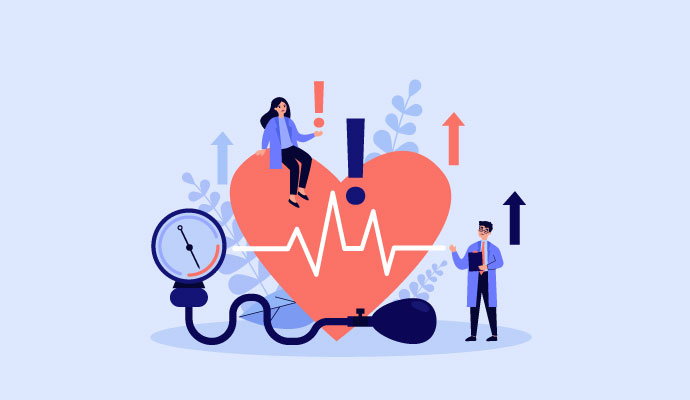Virtual Care On Par with In-Clinic Treatment of High Blood Pressure
New research shows that telehealth can be used to monitor and manage high blood pressure as effectively as clinic-based care methods.

Source: Getty Images
- A new study concluded that virtual care could be used to monitor and treat high blood pressure with the same level of quality as clinic-based methods while improving patient satisfaction.
In the last several years, research on the comparison of in-person and virtual healthcare has grown. Published in the American Heart Association journal, Hypertension, this study aimed to determine how patients responded to high blood pressure treatment in various settings.
High blood pressure, or hypertension, is a highly prevalent risk factor associated with cardiovascular-related deaths in the US. Nearly half of US adults have hypertension, however, only 20 percent have it under control.
Researchers included 3,071 people with an average age of 60 in the study. They received care at 21 primary care clinics in Minnesota and Wisconsin. The research aimed to compare clinic-based and telehealth-enabled care for uncontrolled blood pressure. The clinic-based method involved face-to-face interactions with doctors and medical assistants, and the telehealth method included home-based blood pressure telemonitoring. It also included remote care through telephone calls with a pharmacist or a nurse.
At the beginning of the study, the average blood pressure among participants was 158/92, which significantly exceeded what is considered high (130/80).
Researchers found that both methods were successful in lowering blood pressure. The two methods lowered systolic blood pressure by approximately 18 mmHg and diastolic blood pressure by around 10 mmHg on average. They also found that there was no significant difference in change in blood pressure between the two groups over time.
"These results suggest telehealth team care by pharmacists is an effective and safe alternative to clinic-based care for uncontrolled hypertension," said Karen Margolis, MD, the study's lead author, executive director of research at the HealthPartners Institute, and a professor of medicine at the University of Minnesota Medical School in Minneapolis, in a press release.
Researchers also noted that patients who used the telehealth method were more satisfied with treatment. But there were some limitations related to a low rate of uptake. In total, only 30 percent of patients completed the telehealth sessions.
"We really need future research to see how telehealth can be made more sustainable and equitable so it can reach a broader percentage of the population," said Antoinette Schoenthaler, EdD, a professor of medicine and population health at NYU Langone Health in New York City, who was not involved in the research.
Research surrounding the implementation of telehealth for blood pressure control has become more common as virtual care methods expand.
A study published in the Journal of General Internal Medicine in March found that home-based remote monitoring methods provided accurate blood pressure readings. After assigning study participants to a clinic, home, or kiosk-based method of blood pressure measurement, researchers found that the home monitoring group received more reliable and accurate measurements.
Research from February found that remote patient monitoring and telehealth led to tighter blood pressure control. Participants of the study, all of whom were stroke survivors, received either usual care or the intervention strategy known as Telehealth After Stroke Care. Researchers found that those in the intervention group had higher patient engagement rates and better blood pressure control than those in the control group.
